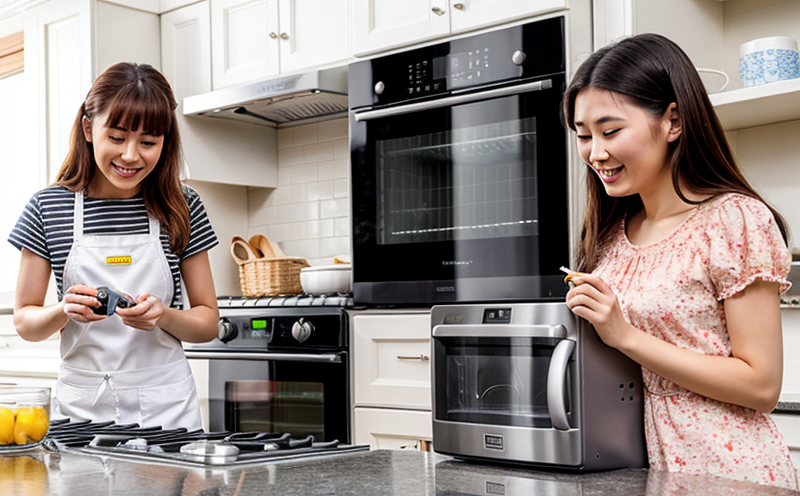IEC 60335 2 109 Safety Testing for UV Radiation Appliances
The IEC 60335 series of standards is a cornerstone in ensuring the safety and performance of household electrical appliances. Specifically, IEC 60335-2-109 addresses the safety requirements related to ultraviolet (UV) radiation emitted by certain household appliances. This standard is critical for manufacturers looking to ensure that their products are safe from potential risks associated with UV emissions.
The primary concern with UV radiation in electrical appliances is the potential health hazards it can pose, particularly when the appliance is not properly designed or maintained. Overexposure to UV radiation can lead to various skin conditions and even cancerous growths if prolonged exposure occurs. Therefore, testing for compliance with IEC 60335-2-109 ensures that products are safe for use in residential settings.
Testing under this standard involves several key steps, including the identification of appliances that could emit UV radiation, evaluation of the types and levels of emitted radiation, and ensuring that these do not exceed permissible limits as specified by the standard. The testing process typically starts with a detailed review of the appliance's design and specifications to identify potential sources of UV emission.
Once identified, the appliance is subjected to various tests designed to measure the level of UV radiation it emits under normal operating conditions. This may include measuring the intensity and wavelength distribution of the emitted radiation. The testing apparatus used for this purpose must be calibrated according to international standards such as ASTM E1390, which ensures accuracy and reliability.
After collecting data, a thorough analysis is performed to determine whether the appliance complies with the specified limits set by IEC 60335-2-109. If non-compliance is identified, corrective actions are recommended based on the nature of the issue. Compliance with this standard not only protects users but also ensures that manufacturers meet regulatory requirements and maintain their reputation for producing safe products.
Testing under IEC 60335-2-109 is a complex process requiring specialized knowledge and equipment. It involves understanding the nuances of appliance design, the physics behind UV radiation emissions, and the application of relevant standards. This expertise ensures that testing results are accurate and reliable, providing confidence in the safety of the tested appliances.
Compliance with this standard is crucial for manufacturers to avoid legal penalties and maintain consumer trust. It also helps in reducing product recalls and liability issues associated with non-compliant products. For quality managers and compliance officers, ensuring that their products meet such standards is essential for maintaining market access and competitive advantage.
R&D engineers can leverage this testing service to innovate while staying within safety guidelines. By understanding the parameters set by IEC 60335-2-109, they can design appliances that not only comply with international standards but also offer enhanced performance and user-friendliness. This approach ensures that new products are safe for use in residential settings and aligns them with global safety regulations.
For procurement teams, selecting suppliers who adhere to these testing protocols is vital. By ensuring that all incoming goods undergo rigorous IEC 60335-2-109 compliance tests, companies can maintain high standards throughout their supply chain. This practice not only enhances the overall quality of products but also protects against potential risks associated with non-compliant components.
In summary, testing under IEC 60335-2-109 is a vital step in ensuring that household electrical appliances do not emit harmful levels of UV radiation. By adhering to this standard, manufacturers can protect both users and themselves from potential risks while maintaining compliance with international regulations.
Scope and Methodology
The scope of IEC 60335-2-109 covers household electrical appliances that are likely to emit UV radiation during their normal operation. This includes a wide range of products such as hair dryers, air conditioners, heaters, and other devices with components that could potentially generate UV light. The standard aims to ensure that these appliances do not expose users or bystanders to unsafe levels of UV radiation.
The methodology for testing under this standard involves several key steps:
- Identification of the appliance: Determine which parts of the appliance may emit UV radiation during operation.
- Measurement setup: Set up the necessary equipment to measure the intensity and wavelength distribution of the emitted radiation.
- Data collection: Collect data on the levels of UV radiation emitted by the appliance under normal operating conditions.
- Analysis: Analyze the collected data to determine whether it meets the specified limits set by IEC 60335-2-109.
The testing process is designed to be rigorous and comprehensive, ensuring that all aspects of UV radiation emission are accounted for. This includes not only direct emissions but also any secondary sources that could contribute to overall exposure levels. By following this methodology, laboratories like Eurolab can provide accurate and reliable test results.
Eurolab Advantages
At Eurolab, we bring over two decades of experience in providing high-quality testing services for a wide range of industries. Our expertise in IEC 60335-2-109 compliance ensures that our clients receive accurate and reliable test results every time. With state-of-the-art facilities and experienced professionals, we are committed to helping manufacturers and quality managers meet the highest standards.
Our advantages include:
- Comprehensive Testing Capabilities: We offer a full suite of testing services tailored to meet your specific needs, from initial design reviews to final product certification.
- Expertise in Compliance: Our team is well-versed in international standards such as IEC 60335-2-109, ensuring that our clients stay ahead of regulatory requirements.
- Accurate and Reliable Results: Using cutting-edge equipment and methodologies, we provide precise measurements and comprehensive reports to support your decision-making process.
- Dedicated Support: Our customer service team is always available to assist you with any questions or concerns throughout the testing process.
By choosing Eurolab for your IEC 60335-2-109 compliance needs, you can be confident that your products will meet international safety standards and gain competitive advantage in the market.





